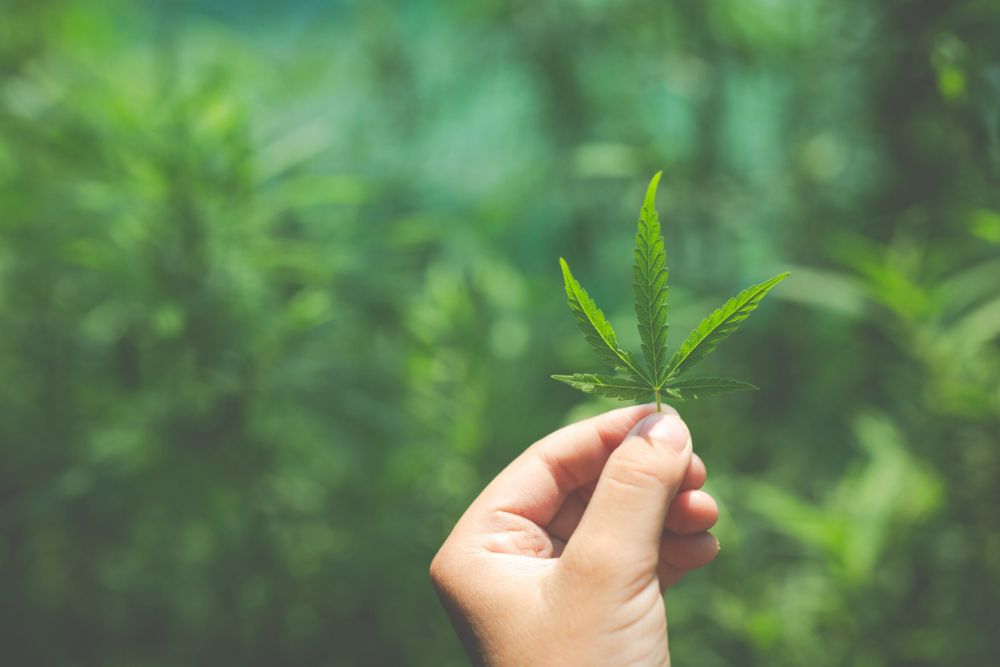The buzz around cannabinoid (CBD) may have you wondering if a CBD product could be effective for your health concerns. To make sense of the emerging claims around CBD products, it helps to know how these products are sourced, what the active ingredients are, and how they function in the body.
The Cannabinoid Alphabet: What’s the Difference between Marijuana, Hemp, THC, CBD, & CBG ?
When you read a product label or health claim, you should see information about the plant source from which the product is made and the chemical compounds it contains. This will typically indicate marijuana, hemp, CBD, CBG, and THC.
Two Cannabis Plants: Hemp and Marijuana
The Cannabis plant is often referred to as hemp or marijuana depending on the level of the psychoactive compound, tetrahydrocannabinol or THC, it contains. THC is the mind-altering substance that makes a person feel “high.”
The percentage of active THC will differentiate between hemp and marijuana. The Food and Drug Administration (FDA) has federal oversight of hemp plants which are legal under the Farm Bill as long as they contain less than 0.3% THC. Regulations and laws related to CBD and THC are highly specific to location so refer to your local ordinances about the growth and use of plants that contain THC.
Both hemp and marijuana contain cannabidiol (CBD) and Cannabigerol (CBG).
Cannabidiol (CBD) is the non-psychoactive compound found in hemp and marijuana. It does not make a person feel “high.” There is an active body of research on the health benefits of CBD.
Cannabigerol (CBG) is a precursor to all the other cannabinoid compounds and it also does not make a person feel “high”. Research is still emerging on the actions and health benefits of CBG.
How Does CBD Work in the Body?
One way that CBD is believed to work is that it seems to mimic and augment the effects of compounds that your body already makes called endogenous cannabinoids. (Endogenous means “caused by or originating from within”). These compounds are part of a pathway known as the endocannabinoid system (EndoCBD System).
The main role of the EndoCBD System is to bring balance to bodily systems (cardiovascular, digestive, endocrine, immune, nervous, and reproductive) by helping to regulate:
-mood and emotion
-energy and metabolism
-gastrointestinal activity
-immune responses
-appetite
-blood pressure
-bone density
-glucose metabolism
-pain sensitivity
-perception and response to stress
In a nutshell, the EndoCBD system works to keep you in balance–what scientists call homeostasis. This is like having your car in neutral. You aren’t revved-up/stressed and you aren’t stalling/exhausted. Researchers believe a CBD product may mimic or augment the body’s natural endocannabinoids while the body is under the stress of illness and struggling to get back in balance. (If you want to get more into the physiological details, check out this resource on the endocannabinoid system for non-scientists: https://www.healthline.com/health/endocannabinoid-system#functions.)
What is the Scientific Evidence for CBD Effects on Health?
As research continues, many promising outcomes have emerged for the effects of CBD on health. CBD is not a cure for illness, however, and it does not reveal or address the root cause of illness. CBD is palliative, rather, and provides symptomatic relief for conditions such as:
-Headaches and migraines
-Chronic pain associated with cancer
-Insomnia and certain sleep disorders
-PTSD, post-traumatic stress disorder
-Anxiety disorders
-Joint pain
To date, the strongest evidence and the only FDA approved use for a CBD-based medication is for childhood epileptic seizures.
Types of CBD Products
-Oils and Tinctures are usually in the form of drops that go under the tongue for quick absorption and for a variety of purposes.
-Capsules and Pills are often used for digestive and seizure disorders with a slower effect time.
-Creams and Lotions are typically used for muscle and joint pain, eczema, and psoriasis.
-Edibles are a discrete way to take CBD in a food product; effectiveness may vary.
What are the Risks of Using a CBD Product?
There are many potential risks in using CBD products, which will vary from person to person. Additionally, scientists do not have a long-standing body of research data to pinpoint the best forms or dosing practices for different people and different health concerns. We do know that CBD products can interact with other medications, street drugs, and nutritional supplements. CBD also carries health risks, including:
-cognitive impairment
-nausea
-fatigue
-mood instability
-change in alertness/reaction time
-gastrointestinal problems
-changes in appetite
-interactions with other drugs and alcohol
-reduction in fertility for males
-liver damage
The long-term effects of using CBD products is unknown. It is also not certain how CBD could affect a pregnancy–either the mother or the developing fetus.
There are a lot of unverified sources and wild claims on the market about what CBD oil and other products can do. CBD is currently an unregulated health supplement. Make sure to research and consult with a qualified healthcare provider so you can obtain a quality-controlled product and are able to use it properly for your personal needs.
Resources:
Magazine, Amber Dance, Nature. “As CBD Skyrockets in Popularity, Scientists Scramble to Understand How It’s Metabolized.” Scientific American. Accessed May 12, 2022. https://www.scientificamerican.com/article/as-cbd-skyrockets-in-popularity-scientists-scramble-to-understand-how-its-metabolized/
“How CBD Works.” https://www.projectcbd.org/how-cbd-works
Healthline. “Meet CBG, the New Cannabinoid on the Block.” February 27, 2020. https://www.healthline.com/health/cbg-oil
De Laurentiis, A., H. A. Araujo, and V. Rettori. “Role of the Endocannabinoid System in the Neuroendocrine Responses to Inflammation.” Current Pharmaceutical Design 20, no. 29 (2014): 4697–4706. https://doi.org/10.2174/1381612820666140130212957
McPartland, J. M., I. Matias, V. D. Marzo, and M. Glass. “Evolutionary Origins of the Endocannabinoid System.” Gene 370 (March 29, 2006): 64–74. https://doi.org/10.1016/j.gene.2005.11.004
Mackie, K. “Cannabinoid Receptors: Where They Are and What They Do.” Journal of Neuroendocrinology 20 Suppl 1 (May 2008): 10–14. https://doi.org/10.1111/j.1365-2826.2008.01671.x

